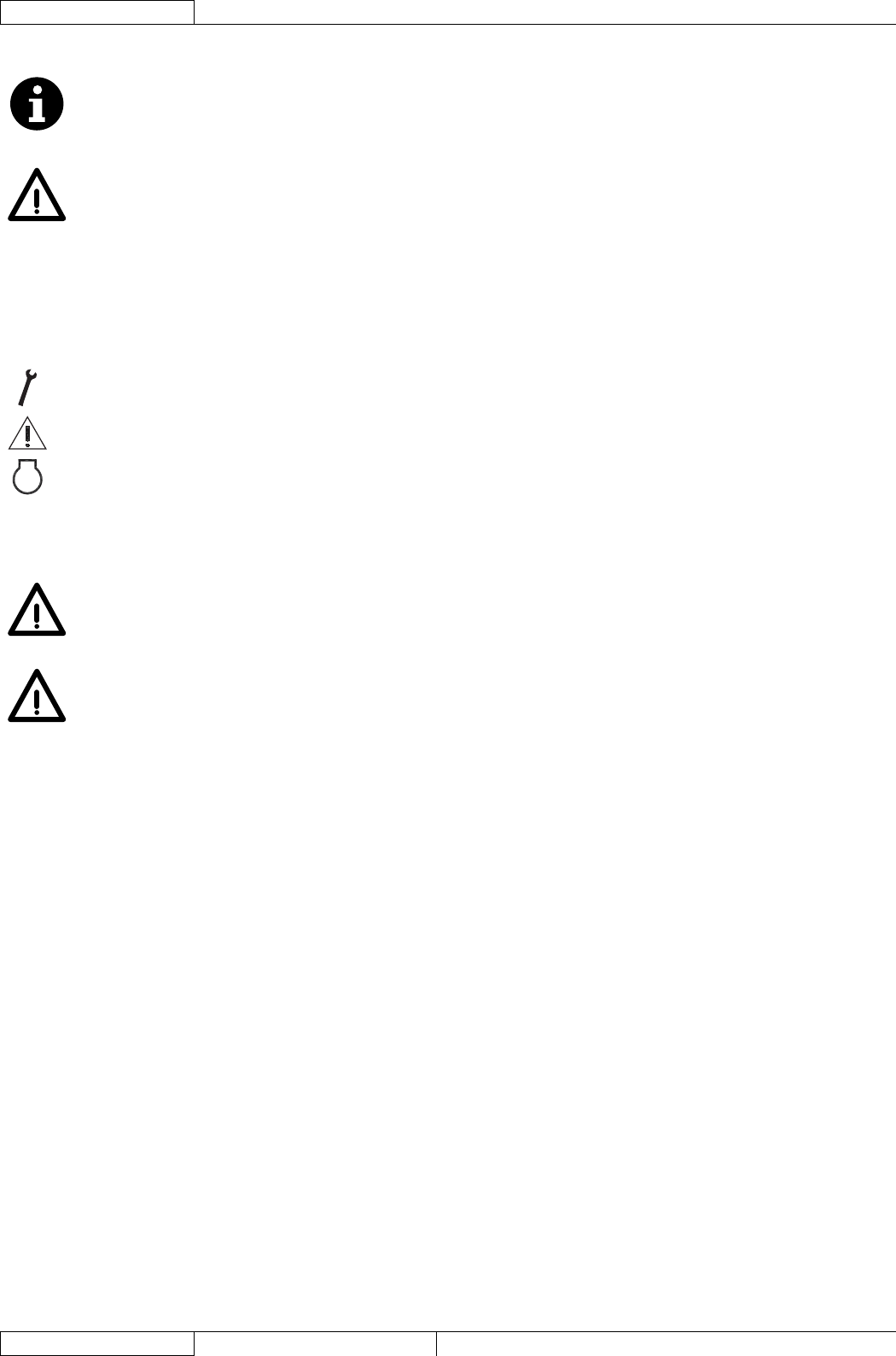
ENGLISH
USER MANUAL
18
33019476(3)2010-02 A RS 2200
ALARM DESCRIPTIONS
NOTE
The alarms shown are both instrument inner alarms (18, Fig. E) and CAN-BUS communication line inner alarms
indifferently.
WARNING!
The alarms are shown for up to 5 seconds. Then the alarm is stored in the B_BOX (see the Display Function
Description paragraph). While the relevant warning light stays on.
The instrument inner alarms are shown also in the ALARM LIST (refer to ALARM.01 and ALARM.02 in Display
Function Description paragraph).
The instrument inner alarms are indicated by the name “ALARM” (9, Fig. I) and by some symbols which identify the source (11) and
the seriousness (10) of the alarm. The visualisation shown on the second line of the text identifi es the alarm description (12, Fig. I).
For some serious alarms, the machine will be automatically shutdown. In this case the counter (14, Fig. I) resets after a countdown
of 20 seconds, then a message appears (13).
In the alarm indications, the seriousness symbol can be different:
-
Alarm which does not compromise the machine operation. Check/replace the component which caused the alarm.
-
Serious alarm which does not cause the machine shutdown. Contact a Nilfi sk Service Center.
-
STOP
Serious alarms which causes the machine shutdown. Contact a Nilfi sk Service Center.
The instrument inner alarms recognised and shown on the display (32, Fig. E) are shown below:
Shorted fuel level sensor (16, Fig. I) –
Open fuel level sensor (15, Fig. I) –
Engine coolant overtemperature (18, Fig. I) (the engine is automatically shut-off) –
CAUTION!
For safety reasons, this alarm is checked also by the diesel engine control unit, then it is also shown as CAN-
BUS line inner alarm, see (21, Fig. I).
Engine oil overpressure and/or low pressure (17, Fig. I) (the engine is automatically shut-off) –
CAUTION!
For safety reasons, this alarm is checked also by the diesel engine control unit, then it is also shown as CAN-
BUS line inner alarm, see (22, Fig. I).
Water in fuel (20, Fig. I) –
Hydraulic oil overtemperature (19, Fig. I) –
The above-mentioned alarms are also indicated by the activation of the relevant warning lights shown in Description of the Control
Area paragraph.
The instrument (18, Fig. E) causes the visualisation of some alarms when the engine data communication lines are interrupted. The
alarms are shown below:
Interruption of data transmission with engine speed sensor (23, Fig. I) –
Interruption of data transmission with engine coolant temperature sensor (24, Fig. I) –
Interruption of data transmission with engine oil pressure sensor (25, Fig. I) –


















